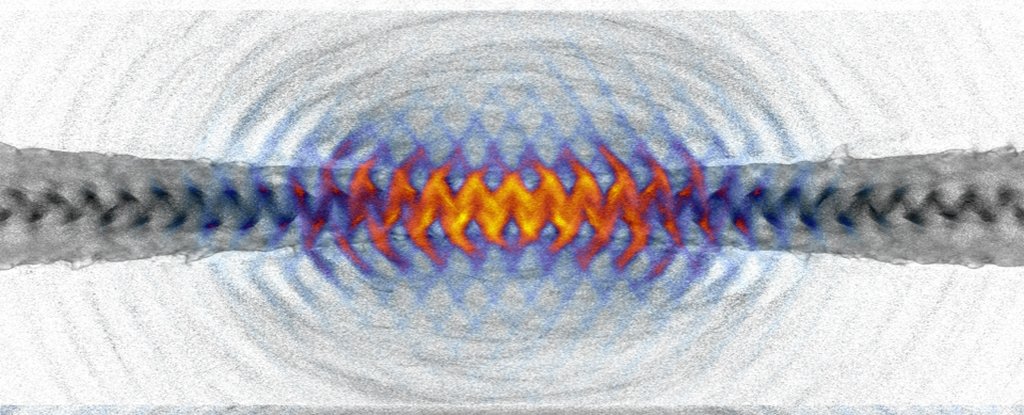Products You May Like
A new study by scientists has demonstrated how researchers may be able to create an accelerating jet of antimatter from light.
A team of physicists has shown that high-intensity lasers can be used to generate colliding gamma photons – the most energetic wavelengths of light – to produce electron-positron pairs. This, they say, could help us understand the environments around some of the Universe’s most extreme objects: neutron stars.
The process of creating a matter-antimatter pair of particles – an electron and a positron – from photons is called the Breit-Wheeler process, and it’s extremely difficult to achieve experimentally.
The probability of it taking place when two photons collide is very small. You need very high-energy photons, or gamma rays, and a lot of them, in order to maximize the chances of observation.
We don’t yet have the capability to build a gamma-ray laser, so the photon-photon Breit-Wheeler process currently remains experimentally unachieved. But a team of physicists led by Yutong He of the University of California, San Diego (UC San Diego) has proposed a new workaround that, according to their simulations, could actually work.
It consists of a plastic block, carved with a pattern of criss-crossing channels on the micrometer scale. Two powerful lasers, one on either side of the block, fire strong pulses at this target.
“When the laser pulses penetrate the sample, each of them accelerates a cloud of extremely fast electrons,” said physicist Toma Toncian of the Helmholtz-Zentrum Dresden-Rossendorf research laboratory in Germany.
“These two electron clouds then race toward each other with full force, interacting with the laser propagating in the opposite direction.”
The resulting collision is so energetic that it produces a cloud of gamma photons. These gamma photons should collide with each other to produce electron-positron pairs, the researchers said, in accordance with Einstein’s theory of general relativity.
Even more excitingly, this process should generate powerful magnetic fields that collimate the positrons (rather than the electrons) into strongly accelerated, jet-shaped beams. In a distance of just 50 micrometers, the researchers found, the acceleration should increase the energy of the particles to one gigaelectronvolt.
Using a complex computer simulation, the researchers tested their model, and found that it should work, even when using less powerful lasers than previous proposals.
Not only would the collimation and acceleration of the positron beam improve the detection rate of the particles, but it bears a strong similarity to the powerful collimated particle jets beamed out by strongly magnetic, rapidly rotating neutron stars known as pulsars.
Scientists believe that processes that take place close to these stars could result in clouds of gamma radiation, similar to their proposed experiment.
“Such processes are likely to take place, among others, in the magnetosphere of pulsars,” said physicist Alexey Arefiev of UC San Diego.
“With our new concept, such phenomena could be simulated in the laboratory, at least to some extent, which would then allow us to understand them better.”
Preliminary testing at the European XFEL X-ray laser facility should reveal whether or not a magnetic field is generated, as predicted by the simulations.
Ultimately, the team hopes that their experiment may be performed at the recently opened and highly advanced Extreme Light Infrastructure Nuclear Physics facility in Romania, which has two powerful short-pulse lasers and gamma-ray beams.
The paper has been published in Communications Physics.
